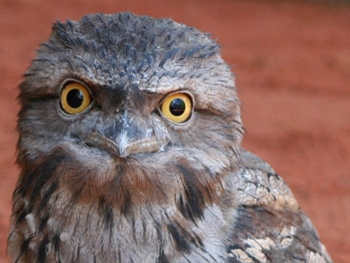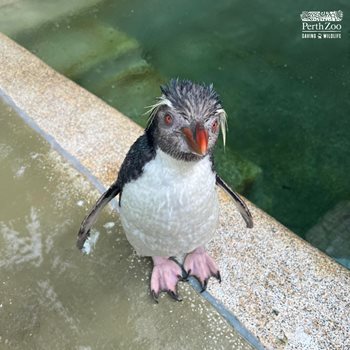From colourful cockatoos to wetland wading wonders, we've got feathered friends from all flights of life.
Take your bird knowledge to new heights by learning about some of the feathered friends you can visit at Perth Zoo.
Little Penguin
First up, we have our charming Little Penguins!
They may be the smallest of all the penguins, but they sure makes a big splash!
These pint-sized seabirds have no shortage of personality and smarts, navigating both the ocean and the shore with aquatic expertise.
They have a streamlined body, small wings modified as flippers and a tail that acts as a rudder. Not to mention their fabulous waterproof feathers, that provide cosy insulation!
If you want to see these tiny tuxedoed torpedos chow down on a fishy feast, come along to a
Penguin Talk and Feed held every day at 11:15am.
Black-necked stork
This wetland wader uses its long legs and neck to see and reach 360 degrees!
They use their sword-like bill to skewer or snatch their prey from the water, but it’s also how they produce most of their sound.
Generally silent, they clack their impressive beaks to communicate, like greeting a mate when they arrive at their nest.
Deceptively named, the Black-necked stork’s head feathers are awash with vibrant colour, shimmering from blue, to green, and even purple!
You can see our stunning Black-necked storks in
our Australian Wetlands.

Tawny Frogmouth
The Tawny Frogmouth is a master of disguise!
When it senses danger, it stays perfectly still and blends into the tree branches so well that you’d swear it was part of the bark.
Tawny Frogmouths often get mistaken for owls, but they’re actually more closely related to nightjars, a nocturnal bird known for having long wings and short beaks.
Another feature of Tawny Frogmouths, is that they often look like they just rolled out of bed!
They have scruffy, fluffy feathers that give them an incredibly charming “I woke up like this” kind of look, and we love them for it.
You can visit our Tawny Frogmouths in the aviary at the Nocturnal House.
Cassowary
We have two charming cassowaries, Maardja and Malak, living right across from our Goodfellow's Tree Kangaroo habitat.
These fascinating flightless giants eat more than 150 different fruits, bugs, fungi, even small mammals.
One of the wackiest things about their diet, is that they often swallow their food whole!
Their digestive system breaks down the fruit after they’ve gulped it down, and then their big seed-filled droppings help to regenerate more plants!
Learn more about these majestic creatures

Northern Rockhopper Penguin
One of the world’s rarest (and cutest) penguins is being rehabilitated behind-the-scenes at Perth Zoo.
Our vet team have been busy caring for rescued Northern Rockhopper Penguin, Pascale, after she was found washed up on a beach in our South-west.
Rockhopper’s are native to islands in the Indian or South Atlantic Ocean, so poor little Pascale was quite far from home!
Our teams have quickly become smitten with Pascale while caring for her – she’s a boisterous penguin full of personality, and she’s not afraid to tell her keepers when her fish breakfast is late.
Learn more about this precious penguin
Fun Fact: Unlike other penguins who slide around on the ice on their bellies, Rockhoppers prefer to travel as their namesake suggests – hopping from rock to rock along the shores.
Stay tuned as we share new birds throughout the week!
Are you a budding birdwatcher or a fully-fledged feather expert?
Take the quiz to find out!